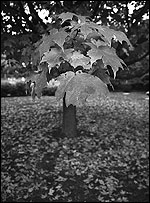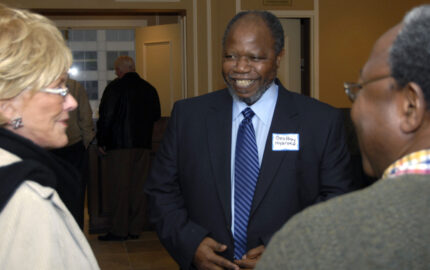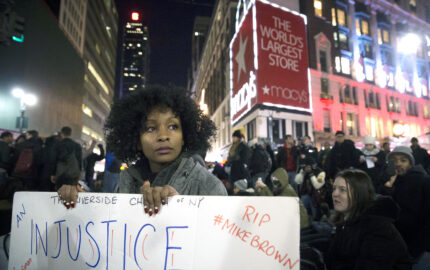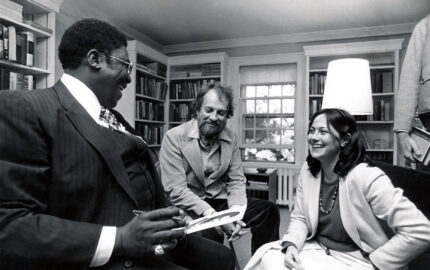I had one chance to see Ansel Adams. In my senior year in college in 1976, I attended a media jobs fair at Howard University. I did indeed get a sports-writing job out of it with The Kansas City Star, recruited incidentally by Gerald Jordan, Nieman class of '82.
Plus, a gorgeous, smart woman from Ithaca College accepted my invitation for lunch. As we began to leave the conference, we passed by a keynote address. The speaker was Adams.
I knew who the great natture photographer was, as I was a stringer photographer for the Milwaukee Associated Press. I froze. Intellect warred with hormones. Adams? Girl? Adams? Girl? Too stupid to simply invite her to hear Adams, we left. Never saw the woman again. Never saw Ansel Adams again. Brilliant.
I learned nothing from this. Three and a half years later, I was dating another gorgeous, smart woman in Boston who was a graduate of Harvard and a student at Harvard Medical School. It was fall, and she asked me, "Let's go see the foliage."
I said, "What's foliage?"
She said, "You know, foliage — foliage?"
I continued to look like an idiot.
"You're kidding. You don't know what foliage is?"
After finally remembering the highfalutin term for the changing of the leaves, I took out both barrels and aimed them at my feet.
"Really now, how long can you look at a red leaf?"
I was clearly paying for not having seen Adams, who wrote in 1972, "The urban child, raised on concrete and under poisonous skies, is not conditioned for the magical experiences of the natural scene."
In fact, 46 years earlier, Ansel Adams had the same exasperation as my date. He was showing his photographs to the dean of the art department at Yale University. When Adams showed his picture titled "Leaves, Mills College Campus," the dean said to Adams, "Just what is this?"
Adams, in his autobiography, said, "It is a picture of foliage."
The dean said, "Yes, I understand that, but what is the subject?"
My foliage date, Michelle Holmes, became my wife, and nearly 30 years later my favorite spot in the world is an island in a lake way up in New Hampshire, where loons, eagles and moose congregate. It is now me who gets urban children off concrete by taking them into the wild in Scouting or by turning chuckles from black audiences over my hobby of bird-watching into an opportunity to debunk the notion that such things are "white things."
An ultimate reward came two years ago at a fair where my local Scout troop was raising funds with my photographs. An elderly woman walked up and, before I could introduce myself, she said, "I'll take those two."
They were an image of the orange-glowing Zion narrows, with Michelle as a tiny, bottom point of reference, and of Yosemite Valley, with wisps of winter clouds floating in its bowels just above the trees.
She said to me, "Young man, I'm buying these pictures for two reasons. One is to support the Scouts. The other is they remind me of Ansel Adams. I used to own several original Ansel Adams, but I've sold most of them off. But these two remind me of him."
I just about died on the spot. How long can you look at a red leaf?

Mount Auburn Maple. Photo by Derrick Jackson.
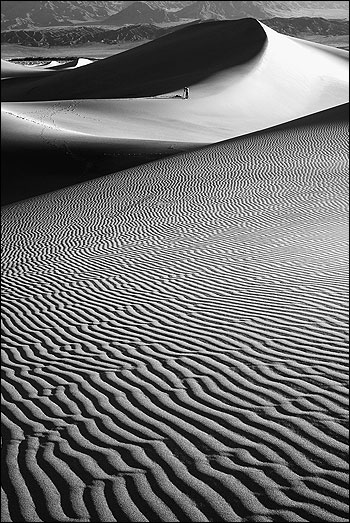
Death Valley dunes at Stovepipe Wells. 2005. Photo by Derrick Jackson.
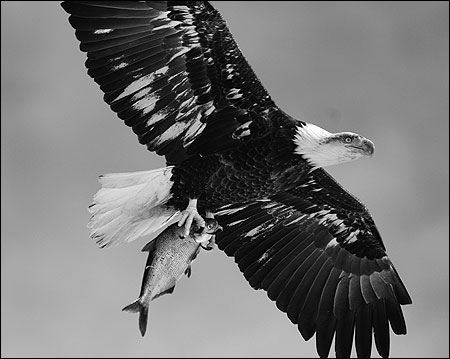
Eagle catch along the Mississippi. Keokuk, Iowa. 2008. Photo by Derrick Jackson.

Puffins. Machias Seal Island, New Brunswick. 2007. Photo by Derrick Jackson.
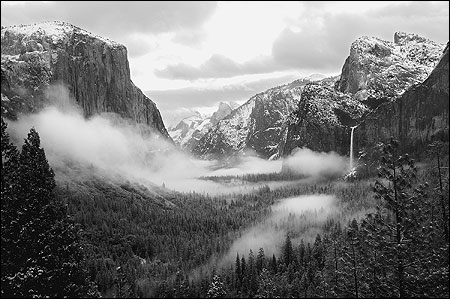
Yosemite Valley. 2006. Photo by Derrick Jackson.

Bullfrog. Catskills, New York. 2005. Photo by Derrick Jackson.
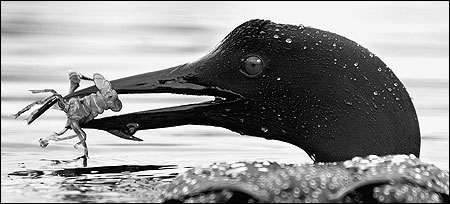
Loon catch at Lake Umbagog. Errol, New Hampshire. 2006. Photo by Derrick Jackson.

Cayman Turtle. Bloody Bay Wall, Little Cayman. 2004. Photo by Derrick Jackson.

Puffins. Eastern Egg Rock, Maine. 2006. Photo by Derrick Jackson.
Plus, a gorgeous, smart woman from Ithaca College accepted my invitation for lunch. As we began to leave the conference, we passed by a keynote address. The speaker was Adams.
I knew who the great natture photographer was, as I was a stringer photographer for the Milwaukee Associated Press. I froze. Intellect warred with hormones. Adams? Girl? Adams? Girl? Too stupid to simply invite her to hear Adams, we left. Never saw the woman again. Never saw Ansel Adams again. Brilliant.
I learned nothing from this. Three and a half years later, I was dating another gorgeous, smart woman in Boston who was a graduate of Harvard and a student at Harvard Medical School. It was fall, and she asked me, "Let's go see the foliage."
I said, "What's foliage?"
She said, "You know, foliage — foliage?"
I continued to look like an idiot.
"You're kidding. You don't know what foliage is?"
After finally remembering the highfalutin term for the changing of the leaves, I took out both barrels and aimed them at my feet.
"Really now, how long can you look at a red leaf?"
I was clearly paying for not having seen Adams, who wrote in 1972, "The urban child, raised on concrete and under poisonous skies, is not conditioned for the magical experiences of the natural scene."
In fact, 46 years earlier, Ansel Adams had the same exasperation as my date. He was showing his photographs to the dean of the art department at Yale University. When Adams showed his picture titled "Leaves, Mills College Campus," the dean said to Adams, "Just what is this?"
Adams, in his autobiography, said, "It is a picture of foliage."
The dean said, "Yes, I understand that, but what is the subject?"
My foliage date, Michelle Holmes, became my wife, and nearly 30 years later my favorite spot in the world is an island in a lake way up in New Hampshire, where loons, eagles and moose congregate. It is now me who gets urban children off concrete by taking them into the wild in Scouting or by turning chuckles from black audiences over my hobby of bird-watching into an opportunity to debunk the notion that such things are "white things."
An ultimate reward came two years ago at a fair where my local Scout troop was raising funds with my photographs. An elderly woman walked up and, before I could introduce myself, she said, "I'll take those two."
They were an image of the orange-glowing Zion narrows, with Michelle as a tiny, bottom point of reference, and of Yosemite Valley, with wisps of winter clouds floating in its bowels just above the trees.
She said to me, "Young man, I'm buying these pictures for two reasons. One is to support the Scouts. The other is they remind me of Ansel Adams. I used to own several original Ansel Adams, but I've sold most of them off. But these two remind me of him."
I just about died on the spot. How long can you look at a red leaf?

Mount Auburn Maple. Photo by Derrick Jackson.

Death Valley dunes at Stovepipe Wells. 2005. Photo by Derrick Jackson.

Eagle catch along the Mississippi. Keokuk, Iowa. 2008. Photo by Derrick Jackson.

Puffins. Machias Seal Island, New Brunswick. 2007. Photo by Derrick Jackson.

Yosemite Valley. 2006. Photo by Derrick Jackson.

Bullfrog. Catskills, New York. 2005. Photo by Derrick Jackson.

Loon catch at Lake Umbagog. Errol, New Hampshire. 2006. Photo by Derrick Jackson.

Cayman Turtle. Bloody Bay Wall, Little Cayman. 2004. Photo by Derrick Jackson.

Puffins. Eastern Egg Rock, Maine. 2006. Photo by Derrick Jackson.

